 Image: Rhett Allain. Composite of multiple video frames
Image: Rhett Allain. Composite of multiple video frames
You probably won?t be surprised, but sometimes stuff moves in circles. Yes, even a car taking a turn is an example of circular motion ? -even if it doesn?t make a compete circle. OK, but how do we talk about the physics of circular motion? Should you use ?centripetal? or ?centrifugal?? I?m going to explain it all to you. Note: there will be some maths ? -but not gratuitous level maths. Just hang.
Nature of Force and Motion
We have to start from the beginning. In this case, that?s Newton?s 2nd Law (also called the Momentum Principle). This says that the total force on an object CHANGES that object?s motion. As an equation, it would look like this.

If there is a constant force on an object, it will have a constant acceleration. Since the acceleration describes how the velocity changes, a constant acceleration for an object means that it will continue to speed up, slow down, or change direction. Check it out. Here is a cart with a single constant force.
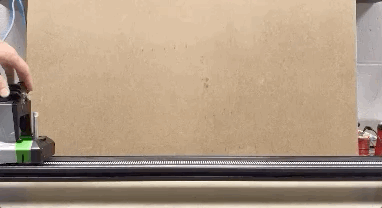
OK, that?s the basics.
Centripetal Force
Let?s start with an analysis of the word itself. The word ?centripetal? literally means ?center pointing?. So, this is a center pointing force.
Go back to the Newton?s 2nd Law equation above. Notice that the F and the a have arrows over them? That?s because they are vectors. A vector is a type of variable that has more than one dimension. This leads to the vector definition of acceleration.

Just a quick reminder, in physics and math the ? (Delta) means ?change in?. You could also write the acceleration as:

As long as the vector velocity changes, you get an acceleration. Now for an example. Here is an animation I made while swing around a ball in a horizontal circle.
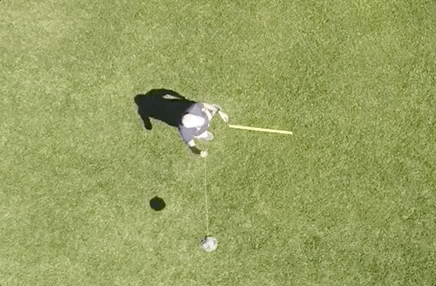
Just a note ? -this is why everyone needs a drone. But let me show a diagram of the ball at two different times.

Notice that the velocity vectors (I will call them v1 and v2 without the subscripts) have the same length. This means that the ball has the same speed at these two positions. However, since the direction changed, there is a change in velocity. Using vector subtraction, you can see that the difference in from v1 to v2 is in the direction TOWARDS the center of the circle. Remember, it?s called ?centripetal? force (which is from centripetal acceleration).
But wait! There?s more. We can also get a magnitude of this centripetal acceleration. I?ll skip the derivation (but here is a video version), but you get the following expression.
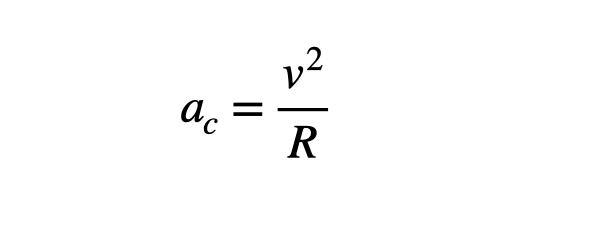
In this expression, R is the radius of the circular radius for the object?s path. Boom. That?s it. If you multiply this centripetal acceleration by the mass of the object, you get the centripetal force.
OK, just to be clear, the centripetal force isn?t a single force. It?s whatever force makes an object accelerate towards the center of the circle. For the swinging ball, this centripetal force is actually the tension in the string. For a car driving in a circle, the centripetal force would be the frictional force between the tires and the road.
Fake Forces
Oh, you want to talk about centrifugal force now? No. You aren?t ready. We need to talk about something else first ? -fake forces.
Jump back to the nature of force and motion. We have this relationship between the total force and the acceleration of an object and it?s awesome. However, it doesn?t always work. In fact, it only works in an inertial reference frame. This is just a fancy way of saying a non-accelerating view point.
Example time. Here is a cart being pulled by a spring (the spring is stretch by another cart with a fan).

Looking at the second cart (on the right), there is a net force pulling to the right and it accelerates to the right. Cool, cool. Everything is as it should be. If you made a force diagram for this cart, it would look like this.
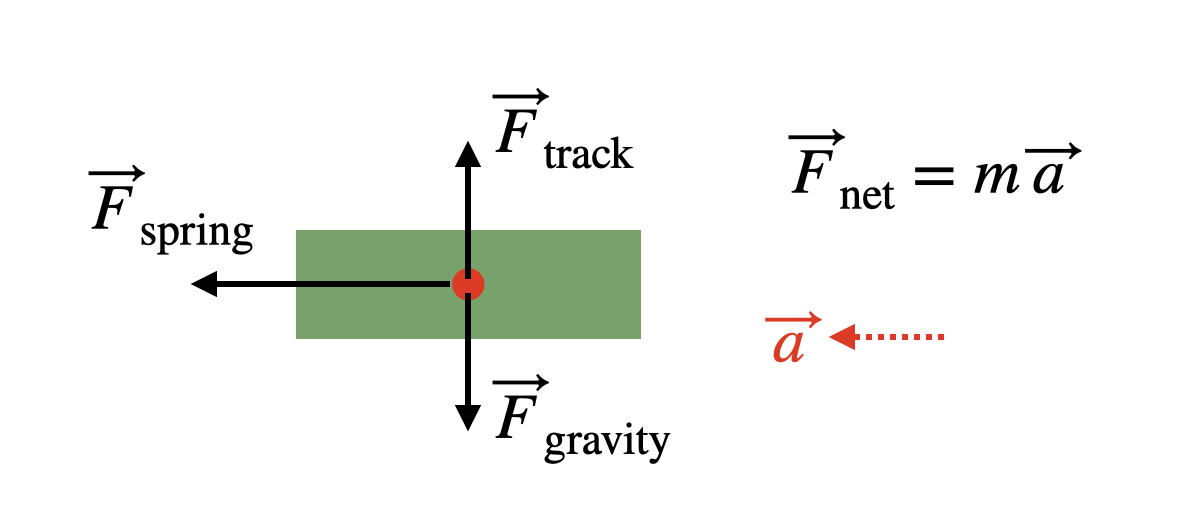
In this case, the two vertical forces add up to the zero vector. That just leaves the force from the spring that makes it accelerate.
But now imagine that you were moving along next to the cart (or maybe even riding on it). In this case, your reference frame would be the cart itself and this reference frame the cart is NOT accelerating. If you just have the same force diagram, there is no way these forces add up to the zero vector. You need to add another force ? -a fake force.
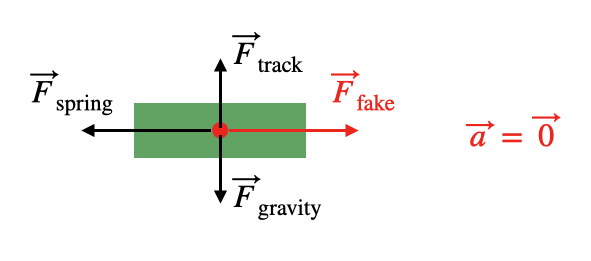
With the fake force, the total force is the zero vector and Newton?s 2nd Law works. You have to add that force so that you can still use our normal force-motion relationship.
The magnitude of this fake force depends on the mass of the object and the acceleration of the reference frame. Notice also that the direction of the fake force is in the OPPOSITE direction as the acceleration of the reference frame.
People think fake forces are real. In fact, they actually feel real ? -but they aren?t. Remember that time you were in a car that was accelerating forward? Don?t you remember that you felt like you were pushed back into your seat? But what force did that? The answer is nothing. There wasn?t a force pushing you back. But it feels something like a sideways gravitational force.
According to Albert Einstein?s equivalence principle, you can?t tell the difference between a gravitational force and the effect of an accelerating reference frame. I just wanted to mention Einstein in this post.
Centrifugal Force
Now you are ready. Let me start by with a breakdown of the word ?centrifugal?. This means ?center fleeing?. A centrifugal force is a force pointing AWAY from the center of the circle.
OK, here is another video. It?s a truck driving around a circle.
If you were inside the truck, you would see something like this. Note: the truck is turning to the left.
 Image: Rhett Allain. View inside a turning truck.
Image: Rhett Allain. View inside a turning truck.
Why does the string hang to the right? What force is pushing it to the side? Really, there is no force. But from the perspective of the accelerating reference frame, there is a centrifugal force pushing away from the center of the circle. Yes, the centrifugal force is a fake force. Here, maybe these two force diagrams will help.

If you are observing this hanging string from an inertial reference frame (standing outside the car), my first comment would be ?why are you looking in my car?? But you would also see the mass at the end accelerating as it moves in a circle. What causes the mass to accelerate? It?s the horizontal component of the force from the string. Yup, that component is the centripetal force.
If you are inside the car (in a non inertial reference frame), the hanging mass isn?t accelerating. It?s just hanging there. So, in order to make the forces add up to the zero vector there is that fake force pushing to the right. This is the centrifugal force.
That?s it. That?s the difference between centripetal and centrifugal forces.
Are Centrifugal Forces Evil?
Why would you ask that? Forces are neither good nor evil. They are just forces. Oh, but your physics teacher in high school said this:
NEVER say the word ?centrifugal?. Never say that in here. That word is banned. If you say ?centrifugal?, you will get a detention.
The problem is that students WANT to use centrifugal forces. It seems to just make sense. But students also have problems identifying forces. When a ball is tossed in the air, what force keeps it moving forward? A common answer is ?the throw force? or maybe ?the velocity force?. Both of these are wrong. The is no force pushing it forward. It moves with a constant horizontal force because there is NO FORCE to change its motion.
Since students have trouble with forces anyway, it seems to be a bad idea to introduce a fake force. They just aren?t ready for it.
Oh, but fake forces like the centrifugal force can indeed be useful. They are just dangerous ? scissors are also both useful and dangerous. Just don?t run with scissors.


